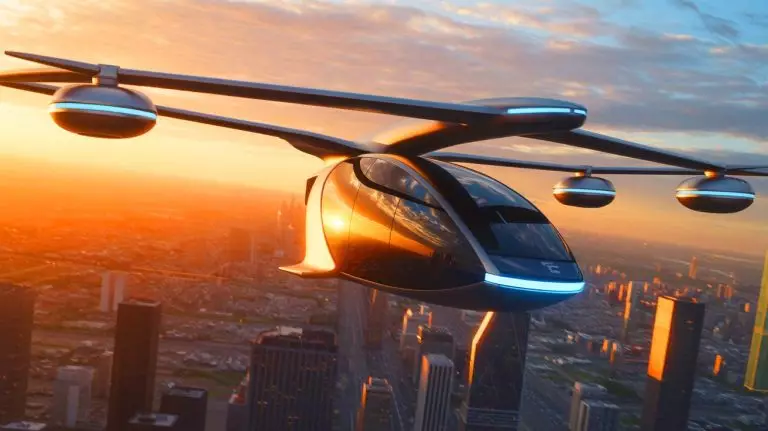| IN A NUTSHELL |
|
The promise of electric flying vehicles is tantalizing: a future where air taxis zip above traffic-laden streets, offering a clean and efficient alternative to traditional modes of transport. However, as engineers strive to refine these cutting-edge technologies, they have hit a significant roadblock—the noise. The engines designed for these vehicles, particularly the boundary layer ingesting (BLI) engines, create a sound that is not just loud but particularly grating to the human ear. Recent research, however, provides a glimmer of hope, revealing not only the causes of this unpleasant noise but also the potential solutions to mitigate it.
Understanding the Enigmatic Noise of BLI Engines
BLI engines are at the forefront of green aviation, designed to improve fuel efficiency and reduce emissions by ingesting the slow-moving air that clings to the aircraft’s surface. While this design is revolutionary, it inadvertently introduces a new problem: noise pollution. The engines swallow turbulent air, which then interacts with the engine components to produce a range of noises that many find irritating.
The research conducted by the University of Bristol and the University of Salford delved deeply into the physics of this noise. Using sophisticated wind tunnel experiments, researchers were able to simulate real flight conditions and study how air movement translated into sound. They identified two distinct noise patterns: “duct haystacking,” a fuzzy sound occurring during cruising, and “fan haystacking,” a harsh noise generated during takeoff. By mapping these patterns back to their aerodynamic causes, engineers now have a roadmap to design quieter engines.
Implications for Urban Air Mobility
The insights from this study are crucial for making air taxis and electric vertical take-off and landing (eVTOL) aircraft viable urban mobility solutions. Current designs for aircraft, such as the Airbus ZEROe and the NASA/MIT Aurora D8, stand to benefit significantly from noise reduction strategies informed by this research. As cities prepare for the integration of air taxis, the ability to minimize their noise footprint will be vital. No city dweller wants to swap the din of traffic for the roar of the skies.
The application of this research extends beyond just aircraft. By understanding how different noise patterns relate to human perception, manufacturers can develop engines that are truly quieter, making the urban airspace more pleasant and less intrusive.
Technological Innovations and Future Directions
While the current study provides a foundational understanding of BLI engine noise, the journey is far from over. Future research will aim to refine the noise reduction techniques specifically targeting both duct and fan haystacking. The potential for applying these findings to other propulsion systems also holds promise, potentially revolutionizing how we approach engine design across various industries.
As urban air mobility becomes more prevalent, continual advancements in noise reduction will be essential. The findings published in the journal npj Acoustics are a testament to the innovative spirit driving this field forward.
The Role of Research in Shaping the Future of Aviation
The collaboration between academic institutions and industry leaders underscores the importance of research in overcoming the challenges posed by next-generation aviation technologies. As researchers continue to explore the intricacies of engine noise, they offer practical solutions that align with both environmental goals and urban planning needs.
As the world stands on the brink of an aerial revolution, it is these meticulous studies that will pave the way for seamless integration of air taxis into our daily lives. The push for quieter, more efficient engines reflects a broader commitment to sustainable innovation and urban harmony.
As we look to the skies and imagine the future of transportation, one question remains: How will cities adapt to the new soundscape introduced by flying taxis and ensure that the innovation is embraced rather than resisted?
Did you like it? 4.3/5 (23)








Wow, I never thought about how noisy flying taxis could be. Glad they’re working on it! 🚁
Isn’t “duct haystacking” just a fancy term for static noise? 🤔
Finally, silence in the skies! Thank you, researchers! 👍
What are the environmental impacts of these quieter engines in the long run?
Sounds like a sci-fi movie plot—alien hums haunting the skies! 👽
How long before we see these quieter flying taxis in action?
Seems like a great breakthrough. But will it make the rides more expensive?